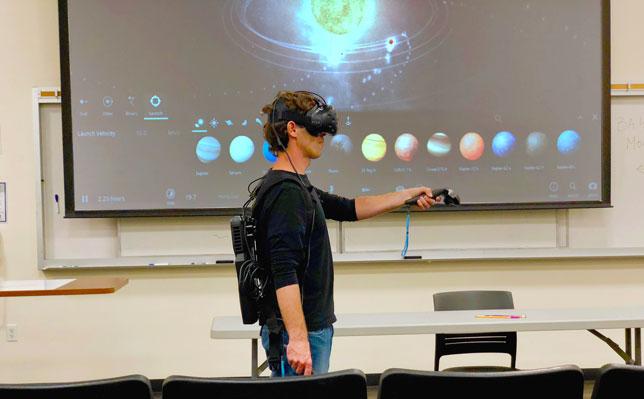Top 7 Inspiring Case Studies of Successful VR/AR Implementations in Schools
The integration of Virtual Reality (VR) and Augmented Reality (AR) in schools is transforming the way students learn, explore, and interact with educational content. From immersive science lessons to virtual field trips, VR and AR in education are no longer futuristic concepts—they are practical tools delivering real results worldwide. In this comprehensive article, we highlight the top 7 inspiring case studies of successful VR/AR implementations in schools, offering insights, benefits, and practical tips for educators eager to embrace the power of immersive technology.
Benefits of Using VR/AR in Education
- Enhanced Engagement: Immersive experiences capture students’ attention and encourage active participation.
- Deeper Understanding: Complex concepts become easier to grasp through realistic simulations and 3D visualizations.
- Accessibility: VR/AR breaks down barriers by providing equal access to unique experiences, irrespective of location or physical ability.
- Increased Collaboration: Many AR/VR tools promote teamwork and problem-solving skills through interactive scenarios.
- Safe Learning Environments: Risky scenarios, such as lab experiments or past reenactments, can be explored safely in virtual environments.
Top 7 Case Studies of VR/AR Success Stories in Schools
Let’s explore seven inspiring examples of VR and AR being successfully implemented in classrooms—demonstrating not only technological innovation but also impactful educational outcomes.
1. Franklin Avenue Middle School, New Jersey, USA – Virtual Field Trips Across Continents
At Franklin Avenue Middle School, teachers leveraged Google Expeditions to take students on virtual field trips, visiting the Great Barrier Reef, ancient Rome, and even the International Space Station. Using affordable VR headsets and smartphones, students experienced these locations firsthand without leaving the classroom.
- Results: Improved geographical understanding and increased student engagement.
- Teacher’s Outlook: “Students were more eager to ask questions and connect what they learned to real-world applications.”
2. george Stephenson High School, UK – Augmented Laboratory for Chemistry
This UK school used Marsbot AR apps to bring chemistry concepts to life.By scanning AR markers, students saw 3D molecular structures and interactive chemical reactions overlayed in real time on their devices.
- results: Meaningful improvement in retention of complex chemistry concepts.
- Student Feedback: “It’s easier to understand molecules when I can see and rotate them in front of me!”
3. South Island School, Hong Kong – VR for History Education
At South Island School, VR headsets and custom-built historical simulations enabled students to “walk through” ancient civilizations and interact with historical figures. These experiences were used as part of project-based learning modules.
- Results: Increased empathy and historical retention; students reported greater enjoyment in history classes.
- Best Practice: Teachers collaborated with VR developers to ensure accuracy and relevance of content.
4. Pennsylvania Leadership Charter School, USA – AR Math Manipulatives
Using the Merge Cube and AR apps, Pennsylvania Leadership Charter School empowered students to handle digital 3D objects in core math lessons.Geometry, fractions, and spatial reasoning activities became more dynamic and interactive.
- Results: Higher test scores in geometry and increased student confidence in abstract math concepts.
- Teacher Tip: “AR provides valuable visual and tactile feedback that textbooks can’t offer.”
5. Riverside STEM Academy, California, USA – Exploring the Human Body in VR
The Riverside STEM Academy introduced students to human anatomy using 3D Organon VR Anatomy. Students explored organ systems, dissected virtual bodies, and engaged in collaborative biomedical research projects.
- Results: Sharper understanding of biological systems; dramatic improvement in practical assessment scores.
- Student’s View: “This is like having x-ray vision and being inside a textbook!”
6. Struer Statsgymnasium, Denmark – Creative Storytelling with AR
In Denmark, literature and language classes at Struer Statsgymnasium incorporated AR storytelling. students created digital overlays, bringing their narrative writing to life with voice, animation, and interactive elements.
- Results: Boosted creativity and language proficiency; students embraced new ways of expression.
- Teacher’s Note: “AR projects encouraged even shy students to confidently present their stories.”
7. Deira International School, Dubai – Inclusive Learning for Special Needs
Deira International school used tailored VR simulations to provide life skills and functional learning experiences for students with learning differences. Scenarios included navigating public transport systems and practicing social interactions in safe, controlled environments.
- results: Increased independence and confidence among special needs students.
- Educator Insight: “VR gives our students a risk-free way to build essential real-world skills.”
Practical Tips for Implementing VR/AR in Schools
- Start Small: Pilot a single VR or AR lesson before scaling up to an entire curriculum.
- Involve Stakeholders: Engage teachers, students, and IT staff early to ensure smooth integration.
- choose the Right Tools: Evaluate free and paid AR/VR platforms—Google Expeditions, Merge Cube, and ClassVR are popular options.
- Focus on Pedagogy: Align immersive technology use with learning outcomes, not just novelty.
- Provide Training: Ensure teachers receive professional development to maximize technology impact.
- Prioritize Accessibility: Select experiences that are compatible with a range of devices and abilities.
Firsthand Experiences: Voices from the Classroom
“Our students are more engaged and curious than ever before. VR and AR have turned our classroom into a launchpad for discovery.”
— Ms. Lisa Campbell, Science Teacher, Riverside STEM Academy
“With AR, the abstract becomes tangible. There’s a noticeable improvement in retention and understanding.”
— Mr. Thomas Jensen, Math Teacher, Struer Statsgymnasium
Conclusion: The Future of VR and AR in Education
These seven inspiring case studies exemplify how VR and AR are reshaping education by making learning more dynamic, inclusive, and effective. Immersive technologies can bridge gaps, ignite curiosity, and prepare students for a future where digital literacy is crucial. As these tools become more accessible and affordable, now is the perfect time for schools and educators to explore the transformative power of VR and AR in the classroom. With careful planning and a focus on pedagogy, the possibilities for educational innovation are truly limitless.

